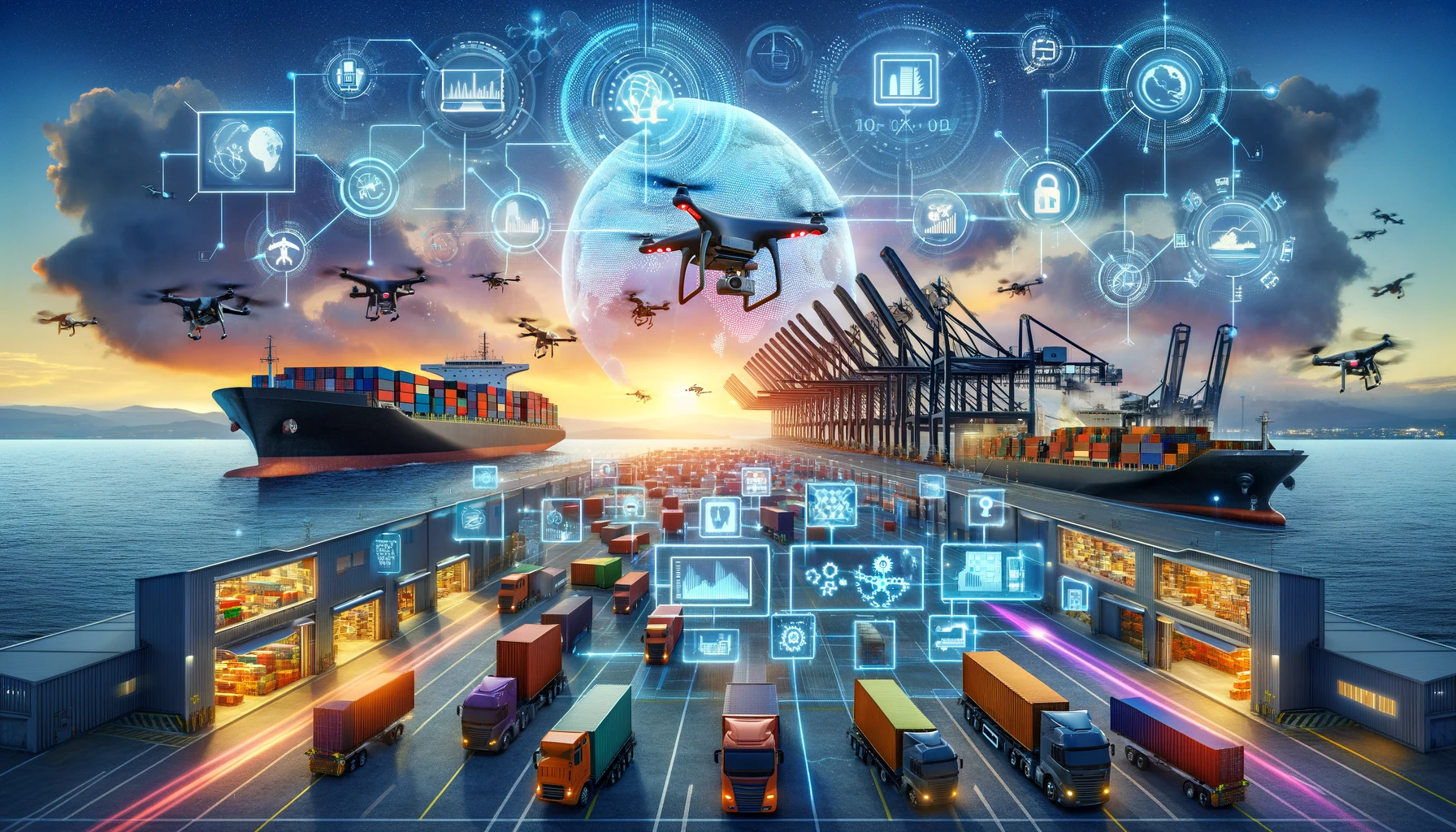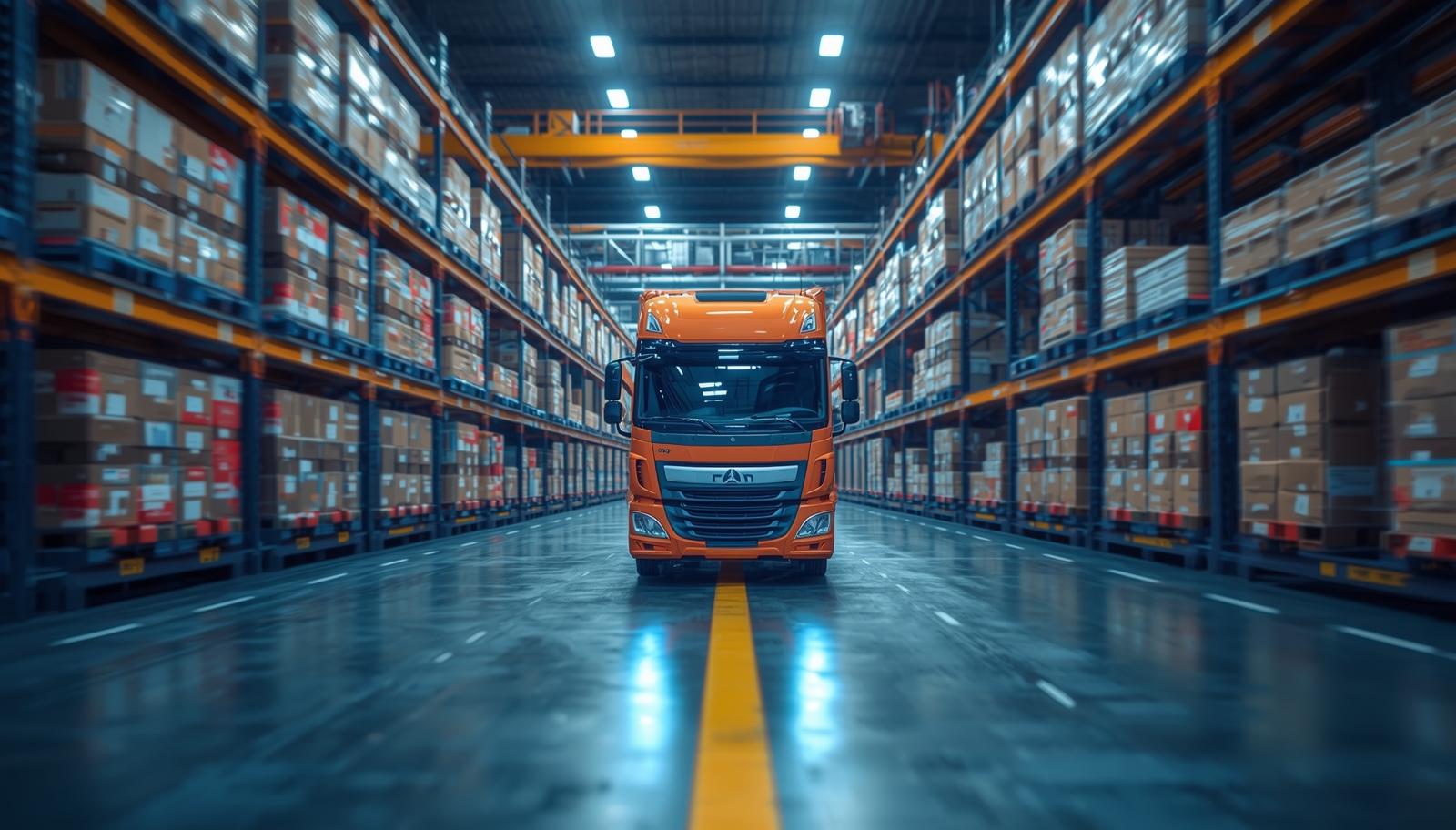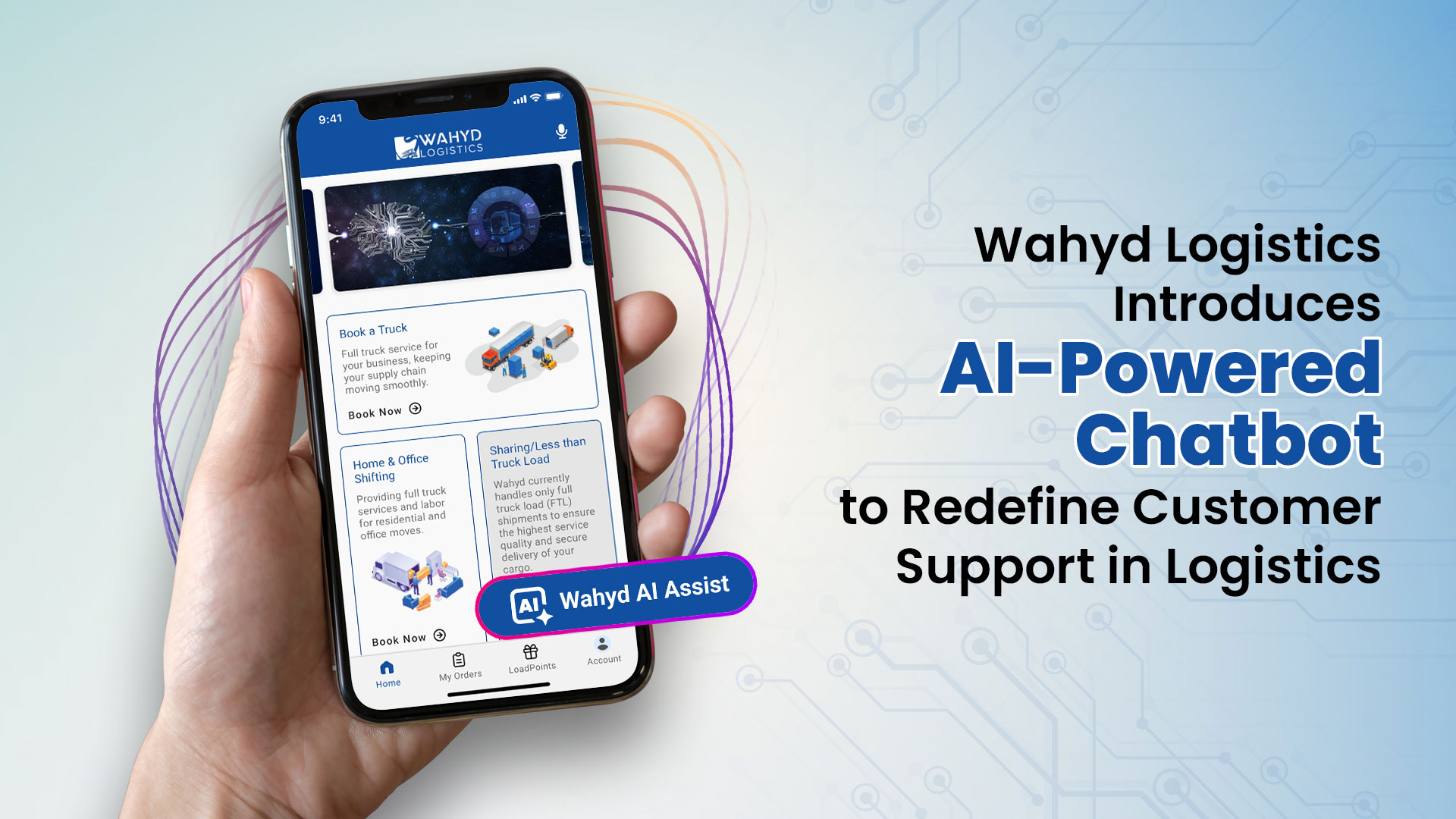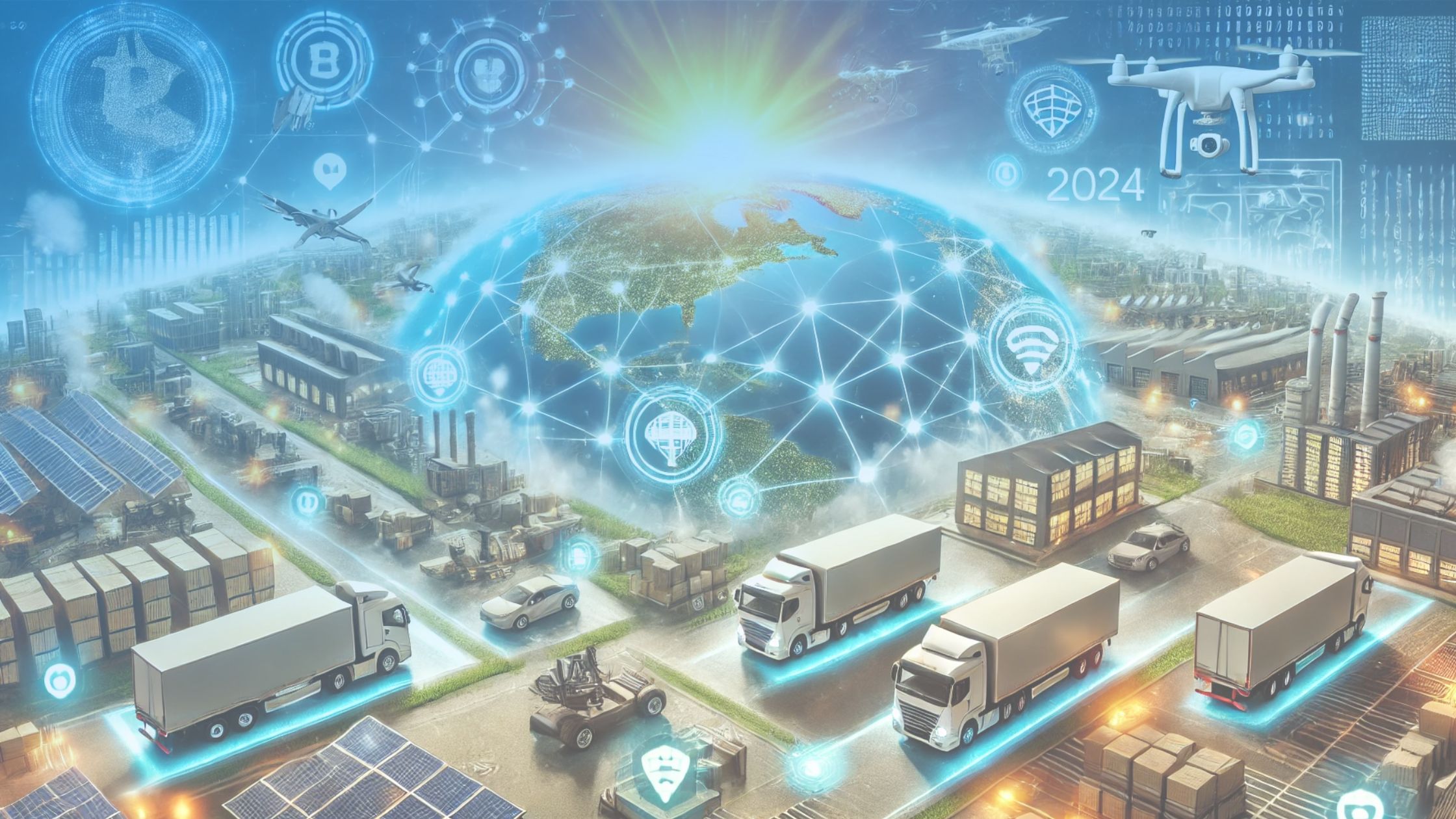
As the world continues to recover from the massive downturn in global trade volume and activity brought about by COVID-19, several key global freight forwarding trends stand out for 2024 and beyond. While these trends did not start in 2024, they are quickly shaping up to be game-changers for this year and the near future. They cannot be ignored by logistics firms regardless of size or market dominance. They definitely should not be ignored by firms based in or operating out of dynamic global shipping hubs like the GCC.
Emerging Trend #1: Increased AI integration in freight forwarding
Freight forwarding involves lots of data points. From inventory tracking to pulling stock to tracking it and reconciling inventory records to even hardware-reported data; safe, effective and profitable freight forwarding is dependent on a sea of information. Considering the amount of cargo a typical freight forwarding firm handles every year, it is not a surprise that many firms of all sizes commit a certain percentage of errors or bad calls during their operations.
Given the cutthroat competition of the international freight forwarding industry, especially in free trade regions like the GCC, logistics firms need all the help they can to rein in costly mistakes in the long chain of processes involved in freight forwarding.
Artificial intelligence can help freight forwarders better manage, process, and decide on data. While there are many different implementations of AI-enhanced freight forwarding, one of the more promising solutions uses a “human in the loop” approach. AI algorithms organize, process, and otherwise make sense of the barrage of data involved in a firm’s operations. The AI then makes recommendations to a human decision-maker.
Key personnel can then make better-informed decisions because systemic data has already been pre-processed and organized for them to act on. AI enables personnel at different levels: operations, management, and executives to become aware of operational patterns and other information that can lead to better decisions. Data-backed decisions tend to lead to better outcomes.
Emerging trend #2: Further integration of the Internet of Things (IoT) technology into freight forwarding operations
IoT in logistics is not exactly new. Freight forwarding firms have been incorporating vehicle tracking to their customer package monitoring systems for more than a decade now. What is different now is the increasing depth of integration in customer cargo monitoring.
Customers can now know where exactly their package is. Still, they can also be given access to other data points IoT picks up from vehicles and facilities like temperature, humidity, security, and other data points. Depending on the customers’ industry and type of freight involved, having access to these pieces of information can go a long way in reassuring them that their goods are not only going to arrive on time but will be safe from theft and be in optimal marketable condition. From this perspective, IoT-enhanced package tracking can help freight forwarding firms attract more customers and keep them. Given this reality, expect even more hardware- and facility-detected information to be fed into freight forwarders’ operations software.
Emerging trend #3: Further systemic automation due to a persistent labor shortage in key markets
Thanks to the increasing share of people refusing to join or reenter the job market in the United States and other developed economies, more and more business leaders are reporting facing a labor shortage for their firms in the past 12 months or so. This labor shortage threatens to increase logistics firms’ labor costs.
Expect this trend to push freight forwarding firms to adopt automation even more aggressively as they seek to rein in labor expenses. Freight forwarders are increasingly opting for fully automated inventory picking and packing at the warehouse level. Some firms are researching driverless truck systems where human-driven vehicles are mimicked by automated trucks in a bid to halve driver costs. There are some overlaps in this type of automation with AI.
Emerging trend #4: Supply chains get smarter through intensive EDI and API integration
Electronic Data Interchanges (EDI) enable logistics firms to take orders from the Web, pick out inventory from a warehouse, and process selected goods for shipping. This information is then routed to the client’s accounting system. If done correctly, EDI helps all the actors in the product fulfillment chain produce a positive customer experience. EDI enables the logistics company to pull the correct inventory, package it, and ship it.
Application Programming Interface (API) integration handles customer sales reporting, package tracking, and delivered package acceptance from multiple data sources, including the delivery vehicle carrying the end user’s ordered package is made visible through a wide range of devices. Whether a customer tracks the ordered product through a laptop, a tablet, or a mobile phone, API flexibility helps reassure the end user that their package is on the way.
2024 should see an even tighter integration between EDI and API as they give logistics firms data that can be further processed to predict shipper demand, shipping patterns, recurring delivery problems, and other important data points which can then be used to trigger standardized responses from the firm. The fewer humans in the decision chain and the more uniform the standardized responses produce, the more the firm saves.
Emerging trend #5: Further adoption of Elastic Logistics
Originating from the concept of “Just in Time” production management, elastic logistics gives freight forwarders and other logistics providers the ability to respond to sudden surges or crashes in the global demand for their services. These sudden changes are often due to late-breaking global events, natural disasters, or political developments. All these are sure to have serious economic consequences if firms do not rapidly adapt to them.
Elastic logistics practices include manufacturers cutting down or expanding production shifts, shippers reducing or expanding cargo space, changing routes, or switching shipping lines. Regardless of the specific form it takes, elastic logistics is built on seamless communication and data interchange between logistics firms and distributors or industrial end users.
2024 poses quite a bit of challenges but the trends described above should give logistics firms a measure of comfort and confidence in weathering whatever challenges lie ahead.
About Wahyd Logistics
Learn more about Wahyd Logistics technology-enabled logistics marketplace here. Allowing you to book, track, and manage your shipments with the touch of a button, our transparent, end-to-end logistics management solution caters to several industries worldwide.






